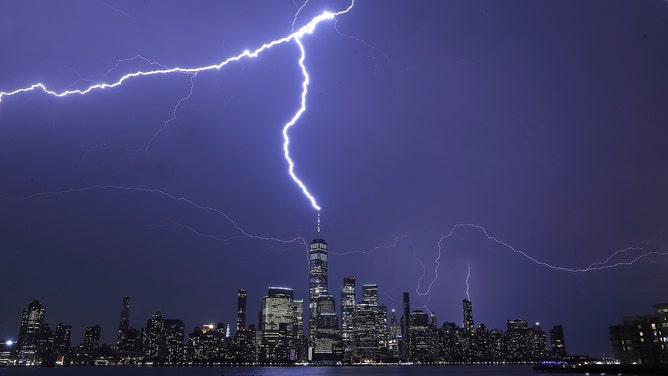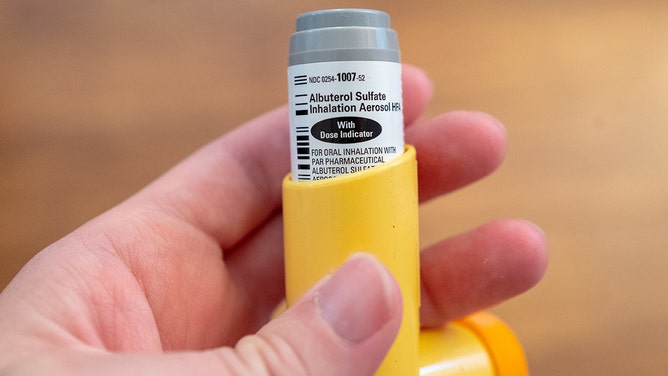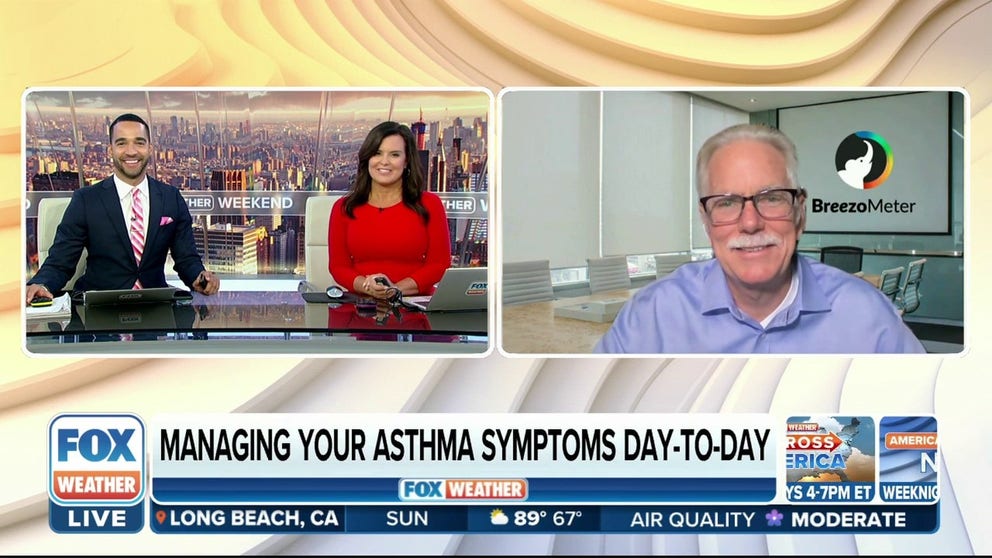Thunderstorm asthma: Why heavy rain doesn't actually reduce pollen for allergy sufferers
While light rain can temporarily reduce pollen counts, heavy rain can make things worse and trigger a rare effect called thunderstorm asthma.
What is thunderstorm asthma?
Storm wind can spread pollen which can lead to asthma attacks.
Thunderstorms could seriously threaten your health for anyone suffering from bad allergies or asthma.
While light rain can temporarily reduce pollen counts, heavy rain can make things worse and trigger a rare effect called thunderstorm asthma, health officials say.
In the U.S., 25 million people have asthma, and more than 20 million have seasonal allergies, Harvard Medical School reports. Odds are good that millions have both, which puts large numbers of people at risk for developing thunderstorm asthma.
Allergic asthmatics can have an acute exacerbation of their asthma in association with a combination of pollen and a thunderstorm, according to Dr. William Barkman, pulmonologist and environmental and occupational health specialist at The University of Kansas Health System.
Experts stress thunderstorm asthma is rare and only happens when the right combination of weather and allergens come together.
THESE ARE THE WORST PLACE TO LIVE WITH ASTHMA IN THE US

Lightning strikes One World Trade Center in New York City during a thunderstorm on September 13, 2021, as seen from Jersey City, New Jersey.
(Gary Hershorn / Getty Images)
What is thunderstorm asthma?
Thunderstorm asthma was originally described in England and Australia in the 1980s, and cases continue today.
"The known science supports pollen being picked up by a significant downdraft and then carried upward to areas of higher humidity," Barkman said. "At that point, the pollen can be fractured by lightning, and the smaller particles are spread by gusty winds."
Depending on the size of the storm, geographically, it can cause a significant outbreak of severe asthma requiring hospital evaluation and management, Barkman adds.
"It could overwhelm local medical facilities," he said. "It may result in asthma fatalities."
Barkman advises individuals in the Midwest with pollen asthma should pay attention to the weather forecast and potentially severe thunderstorms that could exacerbate their asthma.
A 2021 study published in the Journal of Allergy and Clinical Immunology found that 65% of participants with seasonal allergic rhinitis reported experiencing asthma events associated with thunderstorms.
PERFECT STORM FOR ASTHMA: SCIENTISTS LINK STORMS TO SHORTNESS OF BREATH

Close-up of human hand of a man holding an albuterol sulfate inhaler, commonly used in the treatment of asthma as a reduce inhaler for acute asthma attack.
(Smith Collection/Gado / Getty Images)
Who is at risk for thunderstorm asthma?
Individuals with pollen allergic asthma are at the highest risk for thunderstorm asthma – specially individuals with severe or poorly-controlled asthma.
Thunderstorm asthma requires a combination of high pollen counts, which occur in the spring, and thunderstorms with specific meteorological conditions that allow the pollen to be fractured into smaller particles, according to Barkman. They then must spread by gusty winds, which leads to greater airway exposure leading to acute asthma attacks.
Location in addition to air quality could be making asthma worse
If you’re an asthma sufferer, you know to check air quality to keep symptoms in check, but Breezometer.com general major Paul Walsh explains why location is just as important and shows us the worst cities for asthma sufferers.
How can I prevent thunderstorm asthma?
Researchers are still trying to figure out what triggers attacks in certain asthma sufferers and why many are able to escape any types of impacts.
According to the American Lung Association, studies have connected reactions to rye grass pollen that is spread by winds created by thunderstorms.
Experts suggest asthma suffers to:
- Always carry your inhaler
- Keep your home well ventilated
- Avoid being outside when thunderstorms erupt during high pollen seasons
- Make sure your air conditioner is switched to recirculate mode during potential events

